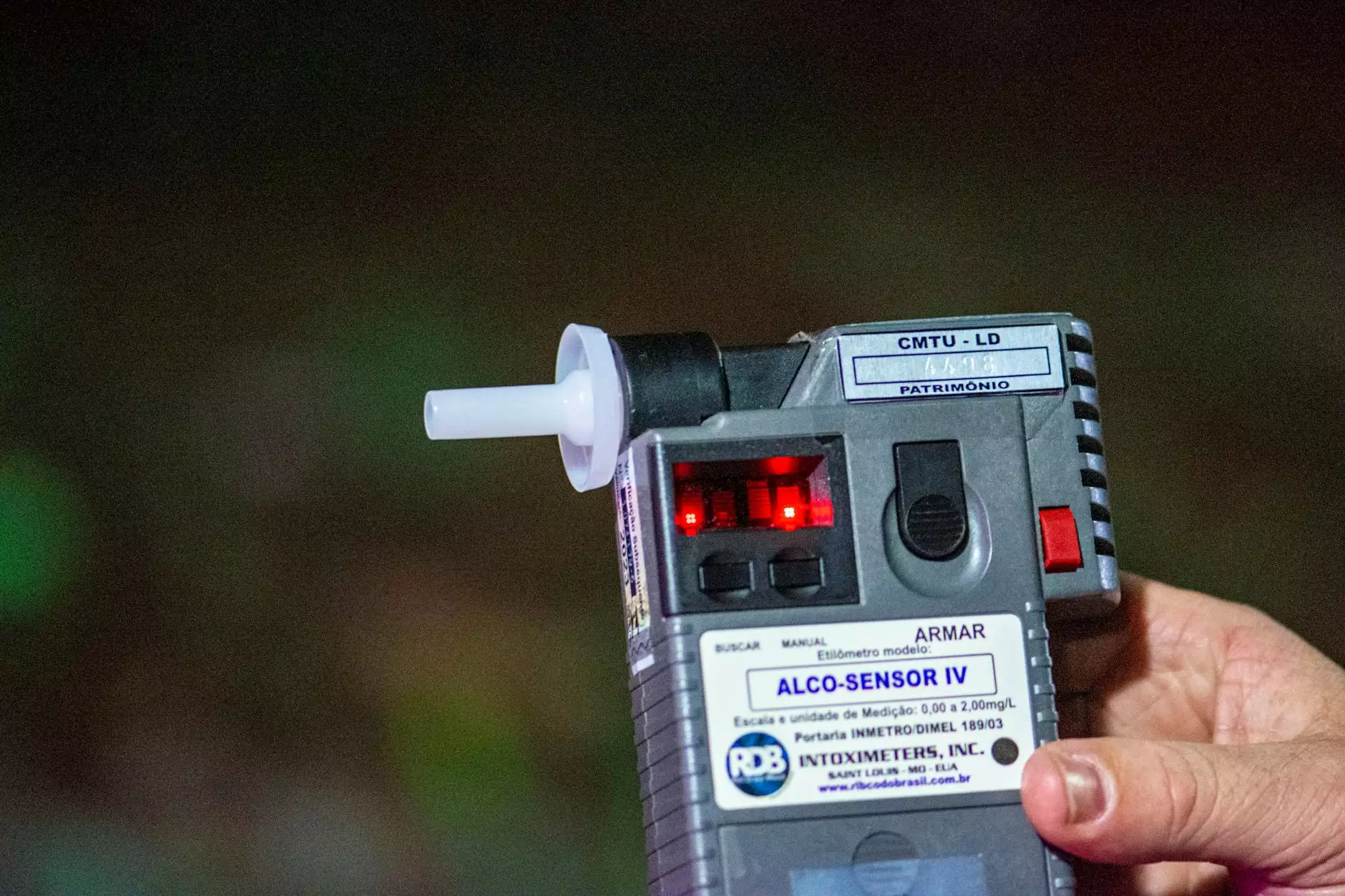Ultimate Guide to Sterilizing Solutions for Medical Instruments in Healthcare

In the realm of healthcare and medical practice, maintaining the highest standards of hygiene and safety is non-negotiable. Central to this commitment is the use of effective sterilizing solutions for medical instruments. From routine sterilization processes to specialized solutions, the choice of sterilization method impacts patient safety, staff efficiency, and overall compliance with health regulations. This comprehensive guide explores the critical aspects of sterilizing solutions, their types, benefits, and best practices for healthcare providers aiming to achieve optimal sterilization standards.
Understanding the Importance of Sterilizing Solutions in Medical Settings
Sterilization is the process of eliminating all forms of microbial life, including bacteria, viruses, fungi, and spores, from medical instruments. The use of sterilizing solution for medical instruments is fundamental to prevent infections, cross-contamination, and ensure patient safety. The high stakes involved in healthcare demand reliable sterilization processes that are both efficient and safe.
Types of Sterilizing Solutions Used in Medical Practice
There are numerous sterilizing agents and solutions, each suited to different types of equipment, materials, and clinical needs. Understanding the variety helps healthcare practitioners choose the right sterilant for their specific applications.
1. Chemical Sterilants
Chemical sterilants are widely used due to their effectiveness and versatility. They include:
- Glutaraldehyde: An effective high-level disinfectant for heat-sensitive instruments, requiring prolonged immersion times.
- Ortho-phthalaldehyde (OPA): A fast-acting alternative to glutaraldehyde, offering shorter sterilization cycles.
- Hydrogen Peroxide: Used in vapour or liquid form, effective against a broad spectrum of microorganisms.
- Peracetic Acid: Suitable for sterilizing heat-sensitive endoscopes and delicate instruments.
- Chlorine Dioxide: An environmentally friendly option with potent disinfectant capabilities.
2. Physical Methods
Physical sterilization involves heat or radiation:
- Autoclaving (Steam Sterilization): The most common method, utilizing pressurized saturated steam at high temperatures (121-134°C).
- Dry Heat Sterilization: Suitable for items sensitive to moisture, using high temperatures (160-180°C) for extended periods.
- Radiation Sterilization: Gamma rays or electron beams used for single-use disposable items or surgical devices.
3. Filtration
Utilized primarily to sterilize heat-sensitive liquids such as culture media or pharmaceuticals, involving passage through high-efficiency filters to remove microorganisms.
Criteria for Selecting the Right Sterilizing Solution
Choosing an appropriate sterilizing solution for medical instruments requires careful consideration of several factors:
- Type of Instruments: Delicate, heat-sensitive, or rigid tools.
- Material Compatibility: Compatibility with plastics, rubber, metal, or glass.
- Sterilization Time: Faster solutions improve workflow efficiency.
- Safety: Non-toxic, environmentally friendly options are preferred for staff and patients.
- Regulatory Compliance: Solutions must meet local and international health standards.
Benefits of Using High-Quality Sterilizing Solutions
Implementing effective sterilizing solutions yields numerous benefits:
- Enhanced Patient Safety: Reduces the risk of healthcare-associated infections (HAIs).
- Compliance: Ensures adherence to strict health regulations and standards such as CDC, OSHA, and ISO guidelines.
- Operational Efficiency: Efficient solutions reduce turnaround time for instrument reprocessing.
- Cost-Effectiveness: Proper sterilization minimizes instrument damage, extends lifespan, and reduces replacement costs.
- Environmental Responsibility: Eco-friendly solutions help minimize environmental impact.
Best Practices for Implementing Sterilizing Solutions in Healthcare Facilities
Effective sterilization involves more than just selecting the right solutions. Proper protocols and practices are essential for full efficacy:
1. Pre-Cleaning of Instruments
Remove bioburden and organic material before sterilization to enhance the effectiveness of sterilants. Use enzymatic cleaners and brushes as needed.
2. Proper Packaging
Use sterile, suitable wraps or containers that allow sterilizing agents to penetrate effectively while maintaining sterility after the process.
3. Adherence to Sterilization Cycles
Follow manufacturer instructions precisely regarding immersion times, temperatures, and concentration levels to ensure sterilization efficacy.
4. Monitoring and Validation
Regularly validate sterilization processes using biological indicators, chemical indicators, and mechanical monitors to ensure ongoing effectiveness.
5. Storage and Handling Post-Sterilization
Store sterilized instruments in a clean, dry environment to prevent recontamination. Use sterile handling techniques to maintain integrity.
Innovations and Trends in Sterilizing Solutions for Medical Instruments
The medical sterilization landscape is continuously evolving with technological advancements aimed at improving safety and efficiency:
1. Eco-Friendly and Biocompatible Sterilants
Increasing demand for solutions that are not only effective but also environmentally sustainable. Innovations include hydrogen peroxide vapour systems and chlorine dioxide-based solutions.
2. Automated Sterilization Systems
Integration of automation enhances reproducibility and reduces human error. Advanced machines incorporate sensors and digital validation features.
3. Cold Sterilization Technologies
Developments in chemical exchanges and plasma sterilization offer effective alternatives for heat-sensitive instruments, reducing turnaround time and expanding options for delicate tools.
The Role of Medalkan in Providing Premium Sterilizing Solutions for Medical Instruments
medalkan.com offers a wide array of sterilizing solutions tailored for healthcare providers who prioritize safety, compliance, and efficiency. Our products include:
- High-quality chemical sterilants suitable for various instrument types
- Autoclaving and dry heat sterilization equipment
- Validation and monitoring tools to ensure process integrity
- Disinfectants and cleaning agents for pre-sterilization preparation
We are committed to delivering innovative, reliable, and environmentally responsible sterilizing solutions that meet the rigorous demands of modern healthcare facilities. Partnering with medalkan ensures your practice remains compliant, safe, and efficient in all sterilization processes.
Conclusion: Elevating Healthcare Standards with the Right Sterilizing Solutions
In conclusion, selecting the appropriate sterilizing solution for medical instruments is essential for safeguarding patient health, ensuring regulatory compliance, and optimizing operational workflows. The evolving landscape of sterilization technology offers a variety of options suited to different needs, but the core principles of efficacy, safety, and validation remain constant.
Healthcare providers must prioritize continual education, regular monitoring, and adopting the latest innovations to maintain high standards of sterilization. Through responsible practices and high-quality sterilizing solutions, clinics and hospitals can significantly reduce infection risks and provide the best possible care to their patients.









